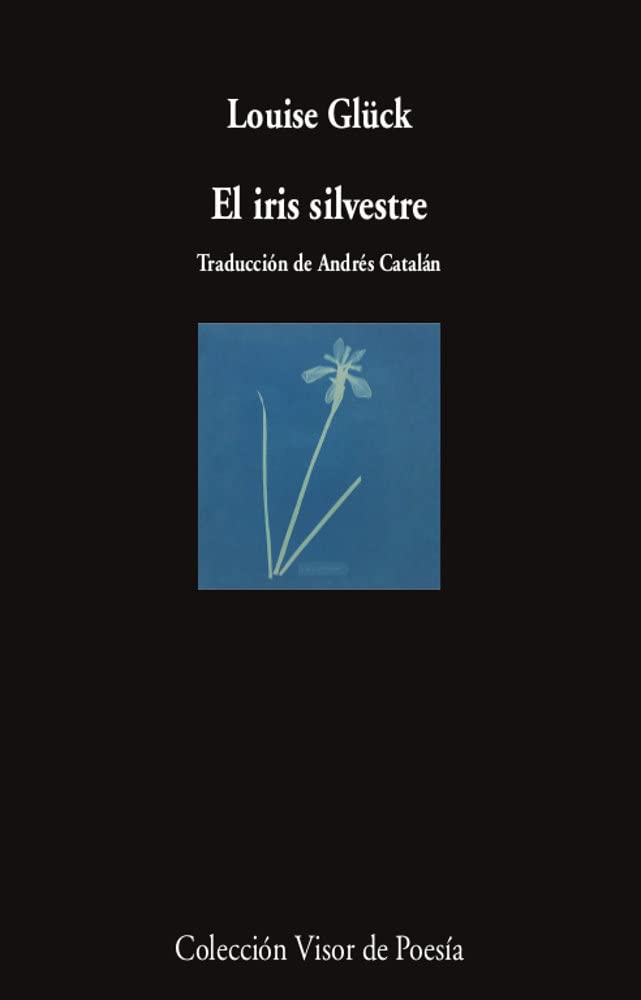
The wild iris
by Louise Glück
«The Wild Iris» (El iris salvaje) by Louise Glück, one of the most renowned and award-winning poets in contemporary literature. The book, published in 1992, is a collection of poems that explore themes such as love, death, nature and memory. Glück uses the symbol of the wild iris, a flower that grows in inhospitable places and resists adversity, to represent the strength and fragility of human life.
The Wild Iris is a collection of poetry by acclaimed American author Louise Glück, published in 1992. This book, which won the Pulitzer Prize for Poetry in 1993, is known for its focus on the relationship between nature, humanity, and divinity. Through her lyrical language and evocative imagery, Glück manages to capture the essence of the human experience in her verse.
The collection is made up of a series of poems that explore the relationship between humans and nature, as well as the communication between the two. The poems are organized in a structure that follows the cycle of a year, beginning in spring and ending in winter. Each poem is narrated from the perspective of a plant, an element of nature, or a human being, allowing the reader to experience the connection between all living things.
One of the central themes of The Wild Iris is the communication between nature and humanity. Glück uses the voice of flowers and plants to convey messages of wisdom and comfort to human beings. For example, in the poem that gives the collection its title, the wild iris speaks of the importance of renewal and rebirth, both in nature and in human life.
Another important theme in the work is the search for divinity and connection to the transcendental. Throughout the collection, Glück explores the idea that nature can be a means of experiencing the divine and finding solace in times of grief and loss. In the poem “Matins,” for example, the poet’s voice addresses God through contemplation of the beauty of nature.
Glück’s writing style in The Wild Iris is characteristic of her work in general: lyrical, evocative, and yet accessible. Her language is simple and direct, allowing her words and images to reach the reader clearly and powerfully. Despite the simplicity of her style, Glück manages to convey an emotional depth that resonates in the reader’s heart.
The book is divided into three parts: “The Life of a Day,” “The Life of a Night,” and “The Life of a Year.” In the first part, Glück presents us with a series of poems that portray everyday and fleeting moments, such as waking up, breakfast, work, or leisure. These poems have an intimate and reflective tone, and show us the beauty and pain hidden in the ordinary. For example, in the poem “Awakening,” Glück writes:
Awakening: a moment
before the sun appears over the horizon,
when the colors of the world
have not yet been formed.
And you are the first eye that sees them.
It’s enough to fill you with joy.
But there is also a void in your heart
that no one can fill.
In the second part, Glück changes her tone and offers us a darker and more mysterious vision of reality. The poems in this section are inspired by Greek myths and Nordic legends, and tell us about characters such as Orpheus, Eurydice, Persephone and Freya. These poems have an epic and dramatic tone, and reveal the conflict between desire and destiny, between life and death. For example, in the poem “Orpheus and Eurydice,” Glück recreates the moment when Orpheus loses his beloved by looking back:
He turned his head to look at her.
and she fainted.
This is how his attempt ended
to rescue her from hell.
What did he feel at that moment?
Love, guilt, anger, pain?
Or just a deep surprise
in the face of the fragility of love?
In the third part, Glück returns to the theme of nature and the passage of time. The poems in this section are dedicated to the four seasons of the year: spring, summer, autumn and winter. These poems have a lyrical and melancholic tone, and convey the feeling of change and cycles that characterize existence. For example, in the poem “Winter,” Glück describes the snowy landscape with these words:
Winter covers everything with its white blanket.
The trees look like sleeping skeletons.
The animals hide in their burrows.
Humans take refuge in their homes.
Winter is the time of silence and sleep.
The time to forget and wait.
The time of dying and being reborn.
In summary, The Wild Iris is an exceptional collection of poetry that explores the relationship between nature, humanity, and divinity through lyrical and evocative language. Louise Glück demonstrates her ability to capture the essence of the human experience in her verse, addressing themes such as communication between nature and humans, the search for the transcendental, and connection with the divine. With its direct writing style and evocative imagery, The Wild Iris is a worthwhile read for any poetry lover.
Source: https://algunoslibrosbuenos.com/el-iris-silvestre


